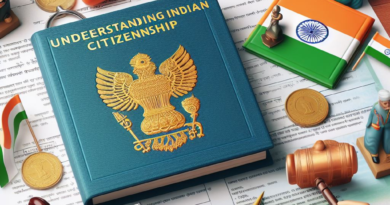| Sovereign: | Complete independent State + Not a dominion of any other country. + Sovereign in internal & external matters. + As a sovereign country, India can acquire a foreign territory or cede a part in favor of any other country. |
| Socialist: | Added by 42nd amendment (1976) + Socialist contents are implicit in DPSPs (Art 36-51) but 42nd amendment mentioned it explicitly.Indian Socialism (Marxism + Gandhism, heavily leaning towards Gandhism) à Democratic Socialism à Adopted Mixed Economic model where both public & private sector coexists side by side. |
| Secular: | Added by 42nd amendment (1976) + Part of basic structure doctrine. + SC (1974): Secular State was implicitly mentioned in articles 25 to 28Positive Secularism in India: All religions have the same status and support from the state. |
| Democratic | Democratic à Doctrine of popular sovereignty – possession of supreme power by the people.It embraces = political + social + economic democracy.Indian democracy: Representative Parliamentary democracy. Executive is responsible to the legislature for all its policies and actions.Manifestation of Indian Democracy: Universal adult franchise, periodic elections, rule of law, independence of judiciary and absence of discrimination on certain grounds. |
| INSTRUMENTS OF DIRECT DEMOCRACY |
| 1. Referendum | Procedure whereby a proposed legislation is referred to the electorate for settlement by their direct votes |
| 2. Initiative | Method by means of which the people can propose a bill to the legislature for enactment |
| 3. Recall | Method by means of which the voters can remove a representative or an officer before the expiry of his term |
| 4. Plebiscite | Method of obtaining the opinion India’s of people on any issue of public importance |
| Republic: | Two Categories: Monarchy (Britain) & Republic (USA/India).Indian republic: Head of State (President) is indirectly elected.Republic means: Vesting political sovereignty in people. Absence of any privileged class and all public offices open to all without any discrimination.Article 54-55– related to the election of the President. |
| Justice: | Taken from the Russian Revolution (1917).Embraces three types of justice: Social, Economic, Political.Distributive Justice = Social Justice + Economic Justice |
| Social | Equal treatment of all citizens without any social distinction based on caste, colour, race, religion, sex etc.Absence of privileges to any particular section.Improvement in the conditions of backward classes & women. |
| Economic | Non-discrimination between people based on economic factors.Elimination of inequalities in wealth, income & property. |
| Political | All citizens should have equal political rights, equal access to all political offices & equal voice in the government. |
| Liberty: | Ideals of liberty, equality, fraternity: from French Revolution (1789).Absence of restraints on the activities of individuals.Providing opportunities for the development of individual personalities.Preamble secures: liberty of thought, expression, belief, faith & worship.Liberty does not mean: License to do what one likes. Need to be enjoyed within limitations mentioned in the constitution.Liberty ensured in preamble & Fundamental Rights is not absolute but qualified. |
| Equality: | Absence of special privileges to any section of society.Adequate opportunities for all without discrimination.Preamble secures: Equality of status + opportunity. |
| Civic Equality | Equality before law (Art.14)Prohibition of discrimination on the grounds of religion, race, caste, sex, place of birth (Art.15)Equality of opportunity in public employment (Art.16)Abolition of untouchability (Art.17)Abolition of titles (Art.18) |
| Political Equality | No one is ineligible for inclusion in the electoral rolls on the grounds of religion, race, caste or sex (Art.325)Lok Sabha & state assembly elections based on adult franchise. (Art.326) |
| Economic Equality | Equal right to adequate means of livelihood & equal pay for equal work to men and women. (Art.39) |
| Fraternity: | Sense of brotherhood. + Single Citizenship promotes fraternity.Article 51-A: Fundamental duty of every citizen to promote harmony and spirit of common brotherhood transcending religious, linguistic, regional or sectional diversities.Fraternity: dignity of individual (personality of every individual is sacred) + unity & integrity of India. (Word Integrity is added through 42nd amendment).Dignity of individual is ensured in Fundamental Rights, DPSPs, Fundamental Duties.Unity & integrity of nation embraces both psychological + territorial dimensions of national integration. |




